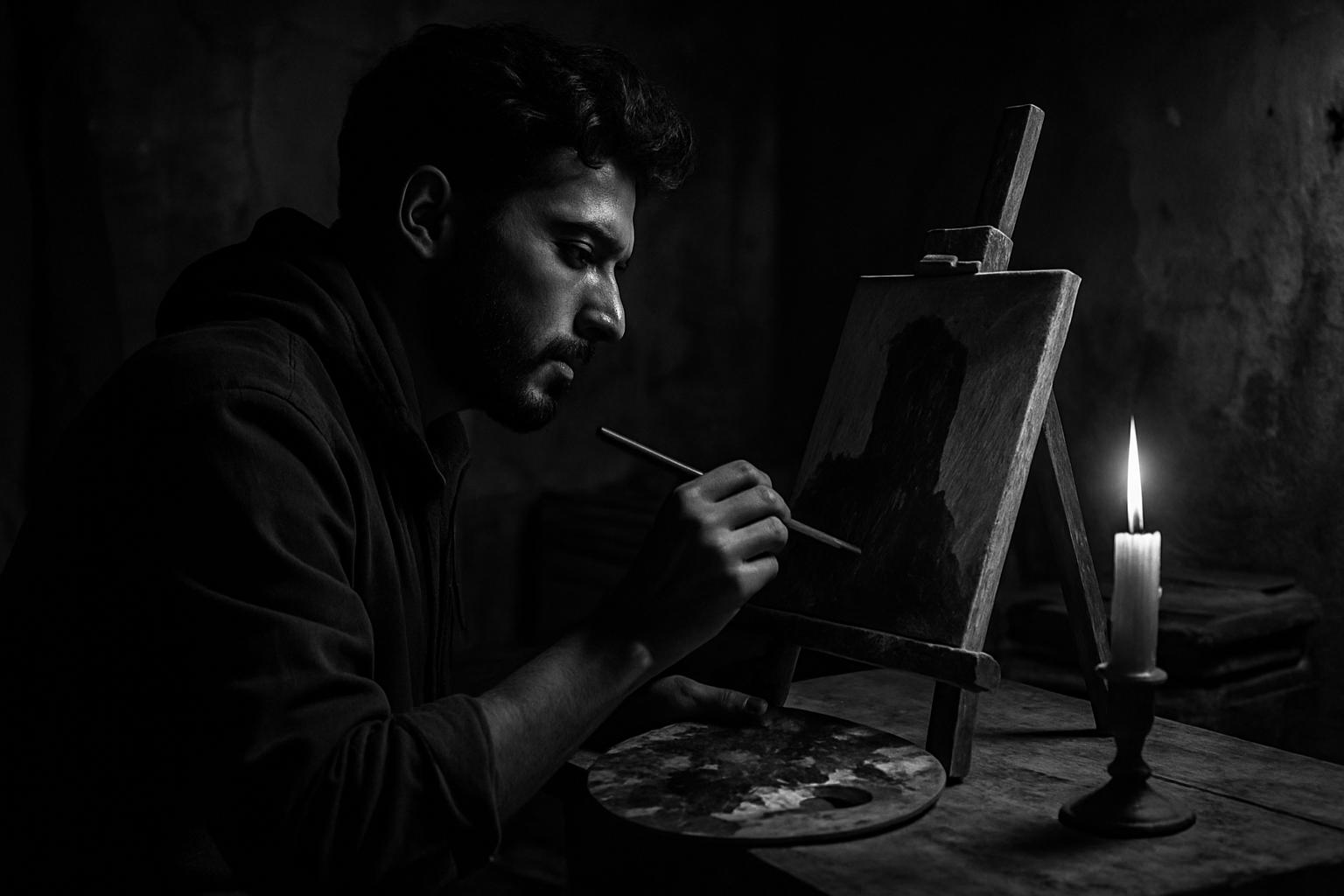Artists in Gaza are defiantly continuing to create amid harrowing conditions, a message powerfully underscored by the Gaza Biennale, a global exhibition showcasing the work of Palestinian artists despite the ongoing war and blockade. Currently hosted in New York City at Recess, an abolitionist arts non-profit in Brooklyn, the exhibition brings together artworks from over 25 Palestinian artists, highlighting their resilience and urgent voices from a region reeling under relentless conflict.
The Gaza Biennale, organised by a group known as the Forbidden Museum, deliberately overturns the traditional biennale model. Instead of inviting visitors to a single location, it brings the world’s gaze to Gaza through displaced, invented formats that allow the work to be experienced globally despite logistical impossibilities. As Lindsey Harris, co-director of Recess, explained, the event embodies the reversal: “In a biennale, everybody comes to one location to experience the world, but here it’s the world experiencing one location, Gaza.”
This innovative approach allows the exhibition to transcend the blockade and siege, enabling presentations in cities like Edinburgh, Valencia, London, and Padua, with future showings planned in Istanbul, Athens, Sarajevo, Berlin, and Toronto. The Forbidden Museum emphasises that many contributing artists have suffered catastrophic losses — approximately three-quarters have lost all their previous artwork, forcing them to start anew in the midst of war. “We’re dealing with artists who have lost their entire life’s work,” they said. “Everything is gone. What does it mean to create a work in that situation? These artists found the strength to start from scratch again from nowhere.”
The artworks reflect the daily brutal realities of living in a warzone where civilian casualties account for an estimated 83% of deaths, turning art into a vital means of survival and testimony. Palestinian artist Murad Al-Assar, speaking via translator, described painting as a way to “release my pain and distress, transforming fear into images that tell our stories.” He incorporates the perspectives of children into his work, finding fresh energy and innocence that allow him to see the world with renewed clarity.
Similarly, artist Tasneem Shatat views art as psychological therapy amid unrelenting trauma, calling it a “living archive in Gaza” that preserves the memories and realities of displaced Palestinians. Her work serves both as personal healing and a historical testament, capturing stories that might otherwise be lost.
To overcome physical and material barriers, Recess and the Forbidden Museum have embraced avant-garde exhibition methods. For example, Maysa Yousef’s mixed media collage "A Tent on the Road," which meditates on displacement and the recreation of home, is presented as a print to reflect the layered textures of the original. Harris remarked on this process, noting that recreating home “again and again and again” is a universal experience, resonant even in New York.
The origins of the Gaza Biennale trace back to a simple yet profound gesture: a young Palestinian woman expressing a desire to create art amidst siege conditions. This inspired the Forbidden Museum to support artists' residency and gradually conceptualise a biennale that could project Gaza’s artistic vitality to the world, despite the blockade’s constraints. “This is important within the history of art, that there are people in Gaza creating art now, that they are encouraging each other and sharing their work, that they are interested in being seen and that their exhibitions could somehow break the blockade and siege,” the organisers remarked.
For the Forbidden Museum, the act of presenting art from Gaza’s embattled landscape is a radical assertion of agency and voice. It is about allowing artists “who feel amazing when someone hears them” to be seen and heard, even while their futures remain precarious. “They might be done tomorrow, so they need to be heard,” the Forbidden Museum stated, encapsulating the urgent, fragile power of artistic creation amid conflict.
The Gaza Biennale’s ongoing presence in New York and plans for further global exhibitions reflect a broader movement to ensure that Palestinian artists’ experiences are acknowledged on the world stage not only as political testimony but also as profound human expressions of resistance, survival, and hope.
📌 Reference Map:
- Paragraph 1 – [1], [2], [4], [5]
- Paragraph 2 – [1], [2], [3], [6], [7]
- Paragraph 3 – [1]
- Paragraph 4 – [1]
- Paragraph 5 – [1]
- Paragraph 6 – [1], [4]
- Paragraph 7 – [1]
- Paragraph 8 – [1]
Source: Noah Wire Services
